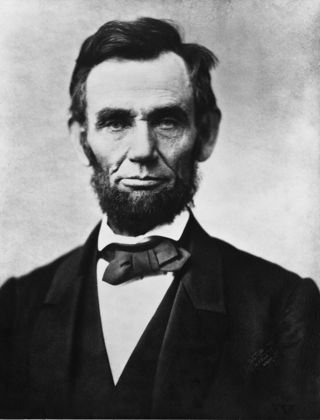Education
Lincoln's Reading List for a Divided Nation
The pivotal books that guided Lincoln's path to the presidency.
Posted August 22, 2017

In 1849, Lincoln had just completed a term in the House of Representatives. He was not elected for a second term, so he returned to his home in Springfield, Illinois. He spent the next seven years reading, thinking, planning and hoping.
Sidney Blumenthal addresses this period in the life of Lincoln in his book, Wrestling with His Angel: The Political Life of Abraham Lincoln Vol. II, 1849 – 1856.
According to Blumenthal, Lincoln’s early education was spotty and traditional. He followed the customary program that led to a good classical education.
But when he returned from Washington, he resumed his education, now with a very different focus. In his early youth, his studies fulfilled outward expectations and he pursued the canon that led to a “good education.” But after his time in the House of Representatives, his education was more self-directed and intentional. It was an education designed to lead him somewhere.
At this point in his life, Lincoln was focused on understanding the growing problems of division the country was facing, and exploring what his personal role might be in addressing those national struggles.
Where should he go with his life?
In this second, and both more national and personal, phase of his education, there were three works in particular that he drew on for inspiration and guidance: The Bible, The Declaration of Independence, and Euclid’s Elements.
How did these works affect Lincoln?
Though Lincoln was not a traditional church-going Christian, he was nonetheless deeply spiritual, and had a strong, abiding faith. He drew extensively on imagery from the Bible. For example, he encouraged people to “follow the better angels of your nature.” And when he warned people that “a house divided against itself cannot stand,” he was quoting directly from one of the most famous passages in the New Testament: Mark 3:25.
For Lincoln, The Declaration of Independence, written 75 years before, was both inspiring and troubling. It was a majestic, visionary hymn to human equality, promising liberty and justice for all.
But it was written by slave-holders.
As Lincoln contemplated the painful dissonance between the statement of The Declaration of Independence and the reality of its creators, he felt a strong call to live his life in such a way that he could make the vision of The Declaration of Independence a reality.
In addition to these first two documents, one of the most inspiring and important works of all for Lincoln was Euclid’s Elements, the classic work by the founder of formal geometry.
The America of the 1850s was a divided country, growing ever more divided. No longer E Pluribus Unum, it was fragmenting into E Unum Pluribus. And the language of everyday discourse showed the strain. It was bursting at the seams from the burden of carrying two diametrically opposed narratives, headed off in different directions.
In the midst of this labyrinthine confusion, Lincoln found clarity in Euclid’s Elements.
Euclid’s geometric axioms go beneath the ambiguities of language to the simple, tangible truths of lines, angles and curves. “A line is the shortest distance between two points.” What could be more declarative or unassailable than a single straight line?
Lincoln returned to the certainties of Euclid again and again throughout his life. Euclid was an oasis in the desert.
Euclid was also immensely helpful in another way, as Lincoln moved toward re-activating his political career, and began preparing for his debates with Stephen A. Douglas. Euclid’s proofs of his theorems guided Lincoln’s thinking, and helped him become adept in the architecture of reason and debate.
We, who are living over one hundred years after Lincoln, find ourselves once again struggling with the stresses of a perilously divided nation. How should we respond?
I believe we would be well served if we returned to the reading list that sustained Lincoln. I especially call our attention to Euclid’s Elements.
Today the very foundations of language are disputed, and purposely confused and called into question. When terms like “fake news” and “alternative facts” are given legitimacy, it is good to return to the crystal clarity of Euclid’s proofs.
But along with the proofs of individual geometric and logical theorems, there is a larger, implied meta-proof in Euclid. It is that, in addition to the multiplicity of individual truths, there is such a thing as Truth. A central, universal, over-riding Truth. Truth exists. It is real.
If our divided country is ever to be healed, we must seek to be guided by Truth.
Euclid provides a model and an inspiration.
© 2017 David Evans
David Evans




